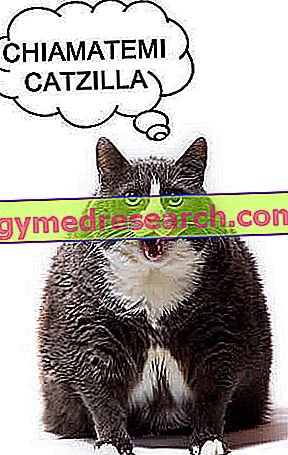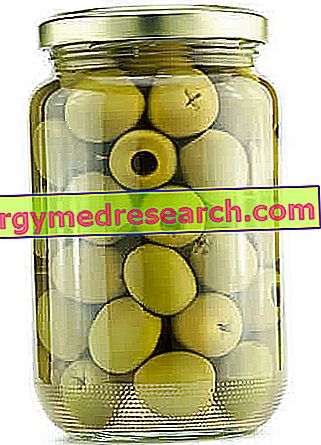Cat Health and Diet
Animals are unable to effectively communicate any physical discomfort.

Certain cat diseases have a rapid and violent onset. They are almost always caused by poor living habits and get worse over time.
On the other hand, this means that both prevention and therapy are easily adoptable.
There is a very strong correlation between the cat's diet and the incidence of pathologies (even fatal) that can afflict it.
Below we will understand better what they are.
Introduction to Dietary Diseases
Frequent pathologies
Some examples of pathologies that progress subtly, sometimes asymptomatically up to irreversibility, are:
- Kidney stones
- Blocks of the urinary tract
- Cystitis
- Diabetes mellitus
- Inflammatory diseases of the intestine
- Tumors.
Some of these diseases are clearly visible and can also be recognized by the owner of the animal.
Obviously, diagnosis and therapy must be established by a professional in a veterinary setting.
Abnormal behaviors
Observation of animal behavior, symptoms and clinical signs remains one of the most important prophylactic factors in reducing mortality risk and definitive functional impairments.
The pathological clues that need to capture the most attention are:
- Presence of blood in the urine.
- Tendency to urinate in places other than usual.
- Frequent and reduced urination; often only the failed attempt is evident.
- Very liquid stools.
- Asthenia (absence of leaps or runs).
- Anorexia.
- Breathing difficulties (mouth constantly open, rales, frankly thoracic ventilation, etc.).
- Change of general habits.
Prevention
To ensure the health of the cat it is necessary to prevent the onset of diseases and / or related complications.
As we will specify in the other dedicated articles, dry food can be an effective cause of diseases affecting the domestic feline.
This involves a very important nutritional imbalance, which involves:
- Excess carbohydrates.
- Water shortage.
- Deficiency of essential nutrients.
Below we will analyze diet related cat disorders.
Obesity
In cats, obesity is a common and very serious problem.
Overweight felines are four times more affected by the development of diabetes.
The cat's diet must be high in protein, low in fat and almost totally free of carbohydrates.
In cat metabolism, excess sugar is not used properly by tissues and these nutrients end up being converted into fats.
The so-called "light diets" for the cat, distributed by the most popular brands, have mistakenly targeted only the fat content (decreasing it) and increasing the intake of carbohydrates instead of protein.
The optimal diet for cat slimming should have:
- + 40% of calories in proteins.
- - 50% of calories in fat.
- - 10% of calories in carbohydrates.
- Much water.
Several studies state that cat slimming can be achieved more easily with protein diets, which prevent catabolism and promote the conservation of muscle mass.
However, at best, commercial foods have an excessive fat content. At worst, the most abundant element is the fraction of carbohydrates.
The best way to promote cat slimming is to increase the amount of water in meals by optimizing satiety; at the same time, it is advisable to increase the physical activity of the animal, for example by having it play.
Diabetes
Diabetes is a serious, frequent and difficult to manage feline disease.
We do not know all the etiological causes.
Diabetes arises with reduced glucose tolerance, hyperinsulinemia and insulin resistance; the final stage is characterized by insulin insufficiency and requires drug therapy (synthetic insulin injection).
On the other hand, certain diabetic cats subjected to the reduction of carbohydrates in the diet significantly improve and no longer require the injection of pharmacological insulin (or decrease the dose).

It is advisable not to underestimate the nutritional impact of the low carbohydrate diet on hormone secretion and tissue sensitivity. .
A sugar-free diet is more effective than most dietary foods advertised by industries. On the other hand, if the cat is already diabetic, it is advisable to adjust the amount of insulin administered to the new diet. In fact, with a hypoglucid diet, the cat tends to have less need for the drug; under such circumstances, administering an excess of insulin may cause hypoglycemia and hypoglycemic shock
Kidney diseases
Renal-insufficiency is the main cause of mortality for the cat.
Chronic dehydration plays an essential role in causing or exacerbating this condition.
The fundamental objective is to maintain the state of hydration, which is why it is reasonable to exclude all dry foods from the diet.
Some companies suggest treating kidney failure in cats in a similar way to humans and propose foods with few proteins called "special diets".
Unlike human ones, the cat's kidneys are prone to managing an exclusively protein diet. On the contrary, the same does not happen due to the lack of water and to the excess of carbohydrates and fats.
There are no clinical studies that support the low-protein diet in cats suffering from kidney failure or in domestic felines affected by any other disease.
On the contrary, it has been observed that many cats whose nutrition is lacking in animal proteins undergo muscle catabolism. It is a form of "self-digestion" that induces a breakdown of muscle tissues and an increase in creatinine and ammonium in the blood.
Moreover, the surplus of these compounds would require a large commitment of renal filtration that cannot occur due to the disease. As a result, the blood values of creatinine and ammonium increase, leading to erroneously inferring that the clinical condition is worsening.
Cystitis, urethral blockage, kidney stones and bladder
Cystitis and stones are very common and painful problems for the cat.
Cystitis causes the feline to urinate inappropriately, in small doses and often outside the litter box.
Calculations (which are NOT crystals) can block the flow of urine by preventing or complicating urination.
In these cases it is essential to observe the behavior of the cat, which if it enters and leaves the litter box repeatedly without pressing could have a serious problem.
It is very useful to use aggregating litter, which also offers a quantitative urine value.
There is a theory that bacterial cystitis could be fought by acidifying the urine. In the wake of this hypothesis, some companies have dedicated a specific line of foods to acidify urine. These nutritional regimens are rich in carbohydrates (which instead make the urine basic), poor in magnesium and potassium. They promote the onset of kidney stones and probably increase the burning of cystitis.
Only 1% of cats with cystitis less than 10 years suffer from urinary tract infection. Nevertheless, many veterinarians still administer antibiotic therapy and forget to recommend a water-rich diet.
In cats over 10 years infections are more common, due to the higher incidence of kidney disease and the consequent reduction in urination.
With age, diabetes and hyperthyroidism also become more common and make animals more prone to urinary tract infections.
Only 20% of elderly cats with cystitis suffer from a bacterial infection, which is why it is always advisable to culture the urine. This examination will specify the relevance and type of antibiotic therapy.
Crystals or Calculations?
After 30-60 'from the expulsion, the cat's urine can form crystals. This also occurs in physiological conditions and increases with the chemical concentration of the liquid.
The presence of crystals in the litter or in the test tube is not alarming; on the other hand, it is better to remember that an infrequent urination caused by dehydration could favor the synthesis of crystals also within the urinary tract.
The only prevention system for all these disorders is the increase in food water, preferring wet food and adding it with little water.
Inflammatory Bowel Disease
Inflammatory bowel disease is a disease of the cat that causes vomiting, diarrhea and / or constipation.
Sometimes it is the reason for an apparently unjustified weight loss or for the frequent vomiting of hairballs.
This disease is little known but responds well to the diet without dry food. On the contrary, veterinarians often administer steroid-based drug therapy immediately.
Undesirable Molecules
Many cat foods are fish based.
This would seem to be anything but wrong, as it is food rich in proteins, water, low in carbohydrates and low in fat.
However, these foods are high in mercury, PBDEs (chemicals related to hyperthyroidism) and phosphorus (the excess of which is potentially harmful in the kidneys of older cats).
These products cannot be used continuously or frequently and should leave space for foods containing meat from land animals (especially poultry).
Hepatic lipidosis
Hepatic lipidosis is the most common liver disease of cats and affects mainly diabetic and overweight individuals.
The treatment consists of an increase in motor activity, an increase in proteins and a reduction in carbohydrates (if in excess, including lipids).
Prolonged fasting can be extremely harmful.
Dental Diseases
Some believe that cats fed on dry food are less prone to develop dental diseases; it is an inaccuracy.
Croquettes are rich in carbohydrates, easy to ferment for bacteria that cause gingivitis and tooth decay.
Most cats swallow the biscuits without chewing, eliminating the mechanical stimulus necessary to maintain the strength of the teeth.
Furthermore, the feline's teeth are designed primarily to grasp and tear, not to chew.
Instead it is advisable to feed the cat with raw meat, preferably with bone, tendons and ligaments. Someone uses it to lightly cook it to kill surface bacteria. In this way it is possible to preserve the mechanical stress on the teeth, avoid carbohydrates and increase the intake of calcium (fundamental for the health of the teeth).



